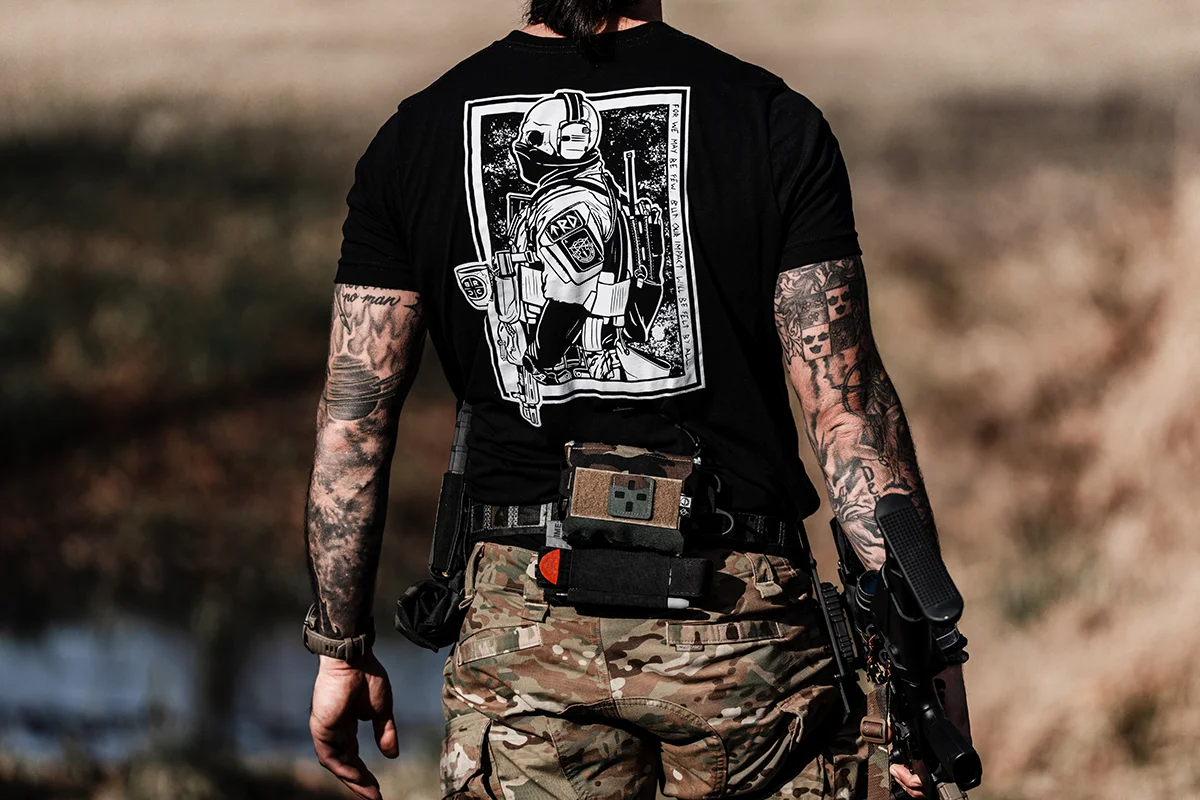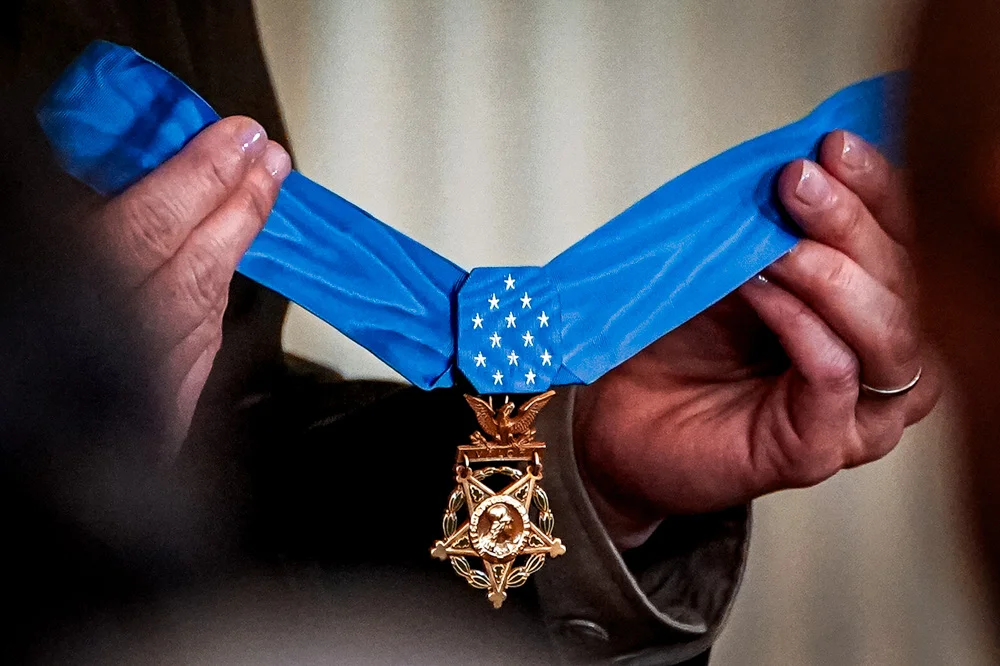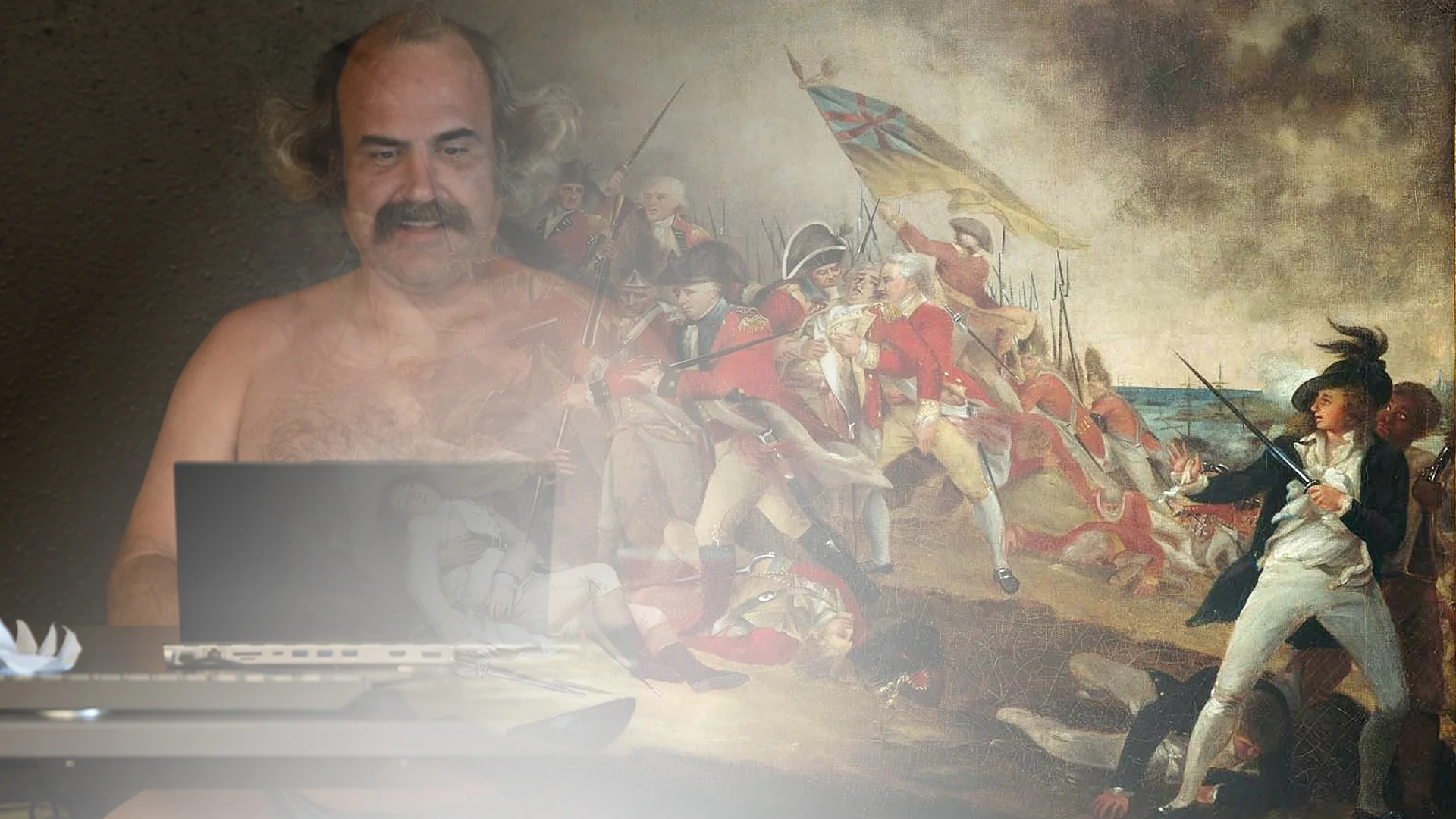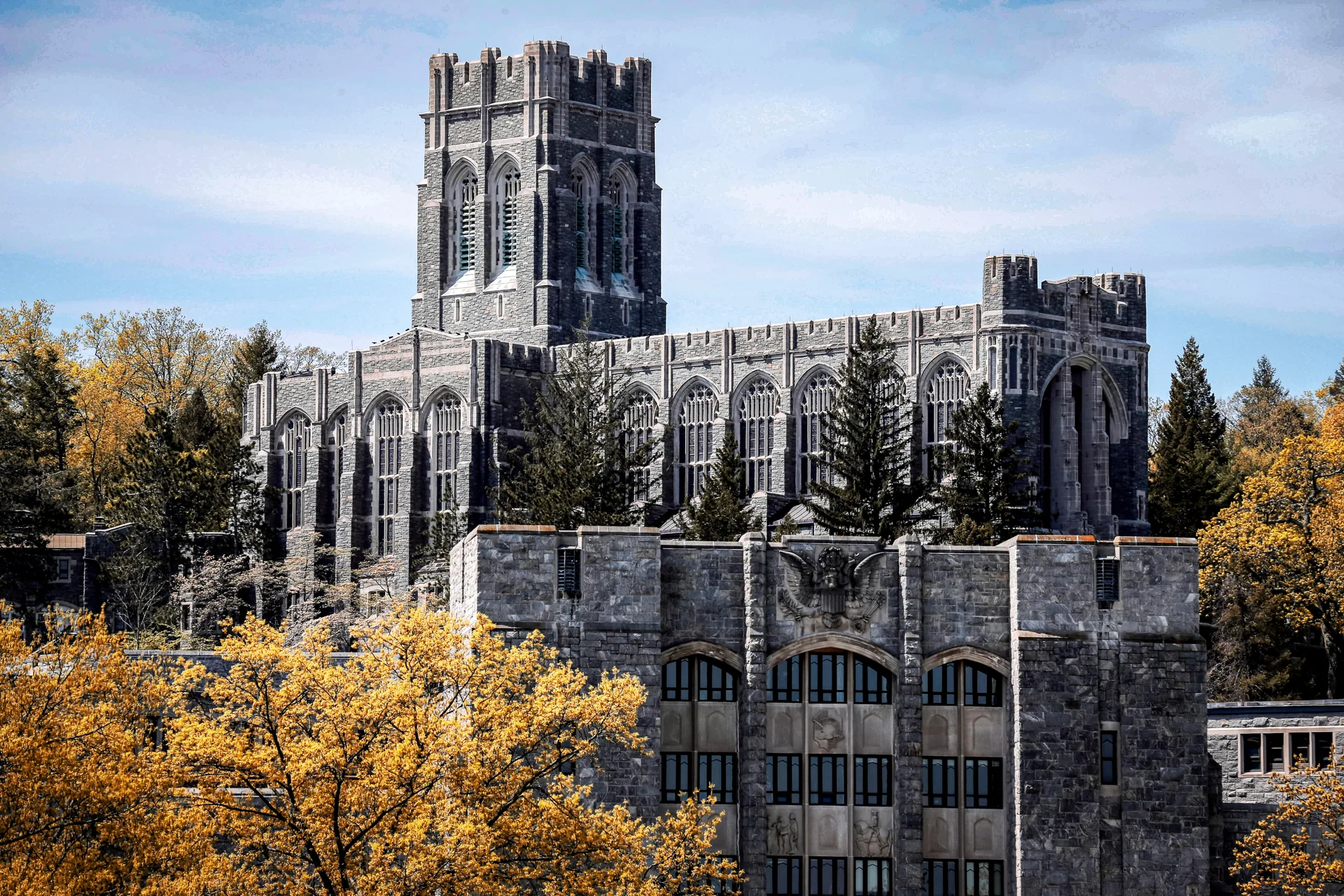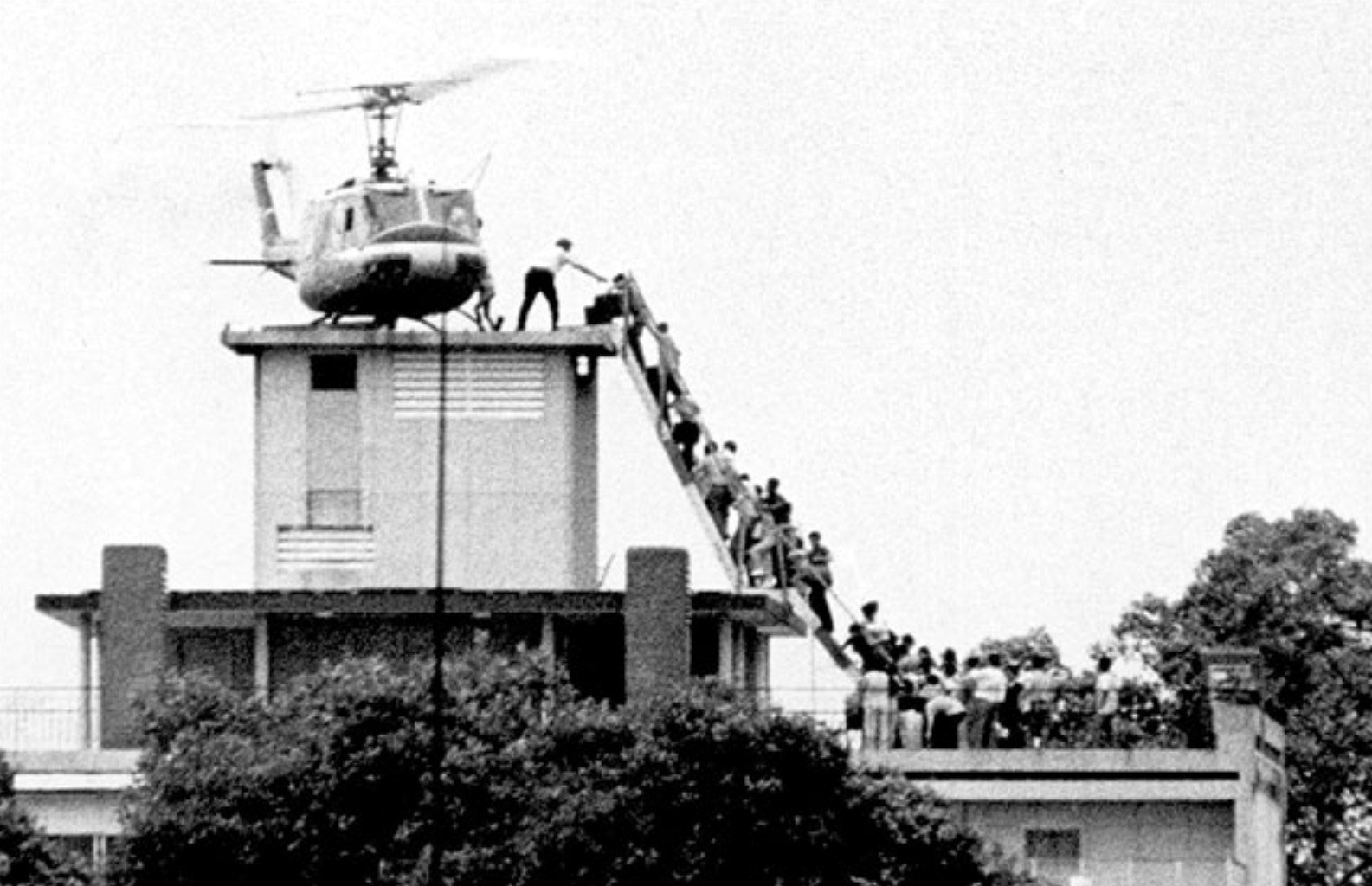
On August 29, 1975, Dutch photojournalist Hubert Van Es captured the historic photograph showing a helicopter evacuating people from a rooftop during the Fall of Saigon. Initial reports misidentified the rooftop as the US Embassy.
The iconic photographs of the Fall of Saigon include a North Vietnamese flag being raised over the city, people being loaded onto a helicopter atop a building, and a helicopter being pushed overboard by American sailors aboard a U.S. carrier. All these events took place during the Fall of Saigon, but they are misleading amongst the chaos.
April 30, 1975, in the American context, is the date that Saigon fell to the People’s Army of Vietnam (PAVN). However, on the other side of the conflict, the Fall of Saigon is known as the Liberation of Saigon. Regardless of the viewpoint, this event marked the end of the war in Vietnam.
Despite the optimistic assessment by the CIA and military intelligence that the city could withstand a siege, the capital city of Vietnam fell rapidly. The groundwork for the city’s demise was laid weeks prior to the event. North of the city, General Văn Tiến Dũng, commander of the PAVN, had launched an offensive against the Army of the Republic of Vietnam (ARVN) in the central highlands. Dũng’s army tore through the region, causing a disorderly retreat of the ARVN toward Saigon. The South Vietnamese lost the major cities of Huế and Đà Nẵng by the end of March. This campaign became known as the Hồ Chí Minh campaign, named after the former revolutionary leader who had died in September 1969.
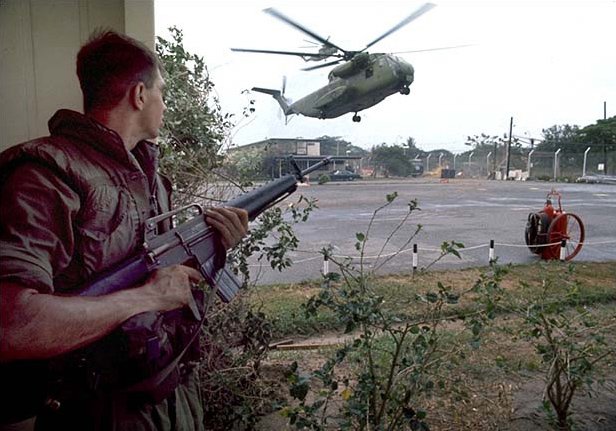
The beginning of Saigon’s demise commenced at the Xuân Lộc district, an area just north of the city. By April 9, PAVN forces had reached this last line of defense before Saigon. The district was defended by the ARVN’s 18th Division. This tough, battle-hardened unit could only put up an 11-day defense against the advancing PAVN. The district was completely overrun by April 20, and the following day, April 21, 1975, Nguyễn Văn Thiệu, the president of South Vietnam, delivered a televised resignation.
The tearful resignation of the president is remembered as a shining moment of the lack of U.S. intervention and aid during the PAVN offensive on the region. President Thiệu even noted this during his speech, outwardly admonishing the U.S. for not doing enough to prevent the oncoming fall of the city.
General Nguyễn Văn Toàn, commander of the ARVN 18th Corps, was charged with defending Saigon. He organized a defense that created a protective arc that encircled the areas west, north, and east of the city. Despite being in the defensive position, the momentum of an already-winning armored enemy element proved too much for the morale-deprived ARVN soldiers. The ARVN soldiers also faced another element of anarchy that would further complement their defensive posture. Due to mass migration of defeated ARVN soldiers and civilians from the previous offensive, the city was thrown into chaos over the influx of leaderless men and civilian masses.
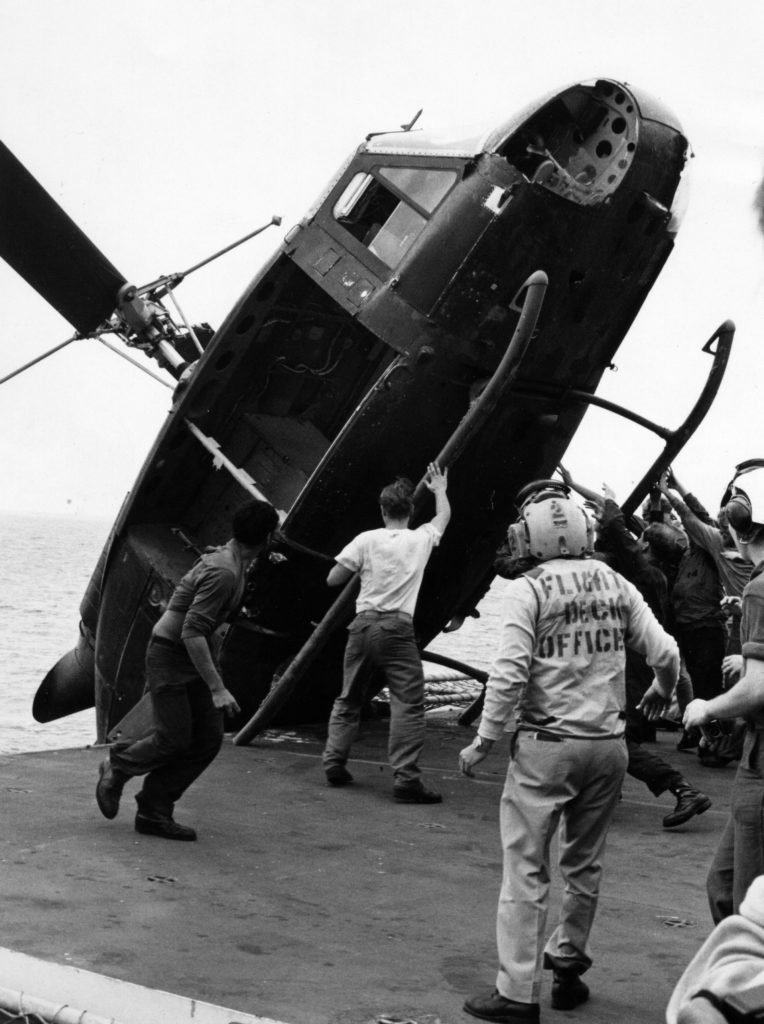
The PAVN began their final attack on Saigon on April 29, 1975. The attack began with a highly effective artillery barrage. This neutralized and demoralized the already disillusioned and battered ARVN elements. The area of the bombardment that struck the Tan Son Nhat International Airport killed U.S. Marines Charles McMahon and Darwin Judge, the last two American servicemen killed in combat in Vietnam. By the next day, the PAVN occupied the strategic points of the city.
The PAVN raised their flag over the South Vietnamese presidential palace, signifying the fall of the city. The city was quickly renamed Hồ Chí Minh City to solidify victory over the South Vietnamese forces.
The lack of U.S. involvement proved to be a major factor in the fall of Saigon. There was evidence within CIA briefs that Saigon would have needed significant U.S. air superiority to help slow the enemy’s armored and infantry advance. In the weeks leading up to the fall of the city, the U.S. was focused on the evacuation of American personnel, allied nation personnel, and the friendly South Vietnamese.
Despite the optimistic assessment by the CIA and military intelligence that the city could withstand a siege, the capital city of Vietnam fell rapidly.
While the Fall of Saigon was portrayed across international media as a blatant blunder of American foreign policy, the weeks and days leading up to the demise of the Republic of South Vietnam proved a humanitarian success.
Widespread rumors and government reports noted the atrocities of the PAVN as they pummeled their way to the outskirts of Saigon. It is alleged that mass graves were eventually unearthed years after the conflict and that former leadership, business, and political figures were targeted for public beheadings in an effort to completely demoralize any potential further resistance by the South Vietnamese.
President Gerald Ford’s administration was still in its infancy. Allegations such as these would explain the imperative emphasis on evacuation by the Americans to prevent further embarrassment. Ford’s leadership council likely wanted to avoid any type of mass imprisonment crisis to already add to the staggering number of American prisoners of war (POWs), already being held in Hanoi.
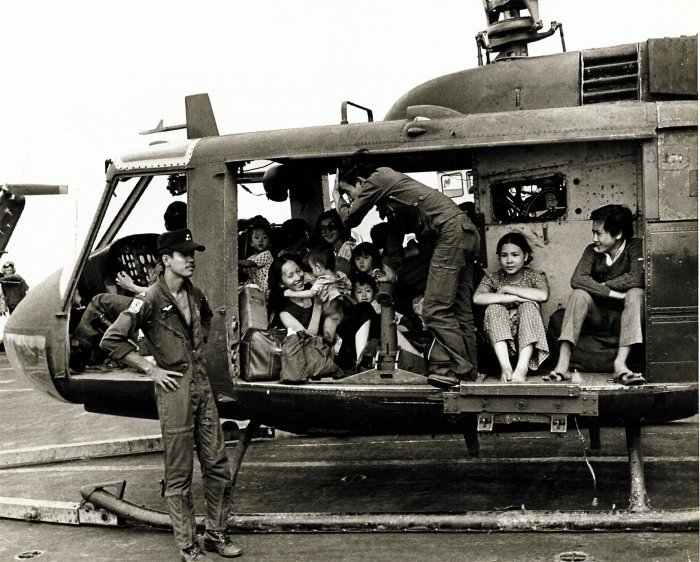
One such operation was called Operation Babylift. This U.S.-led operation led to the eventual evacuation of about 2,000 orphans from the country. However, the operation wasn’t without tragedy. A plane involved in the evacuation crashed, killing 155 passengers and crew. Another mission, Operation New Life, focused on the evacuation of friendly South Vietnamese. Vietnamese refugees successfully evacuated during this mission numbered 110,000.
Many South Vietnamese were able to self-evacuate as well, fleeing by fixed-wing aircraft and boat to the safety of U.S. outposts and naval vessels.
However, the major and final phase in the evacuation attempts of the city of Saigon was known as Operation Frequent Wind. The purpose of the operation was to evacuate American civilians and Vietnamese civilians from Saigon. The evacuation was carried out over the course of two days as the city was falling to the PAVN.
Throughout the course of the helicopter evacuation effort of Operation Frequent Wind, more than 7,000 people were evacuated to safety. It became known as the largest helicopter evacuation in history.
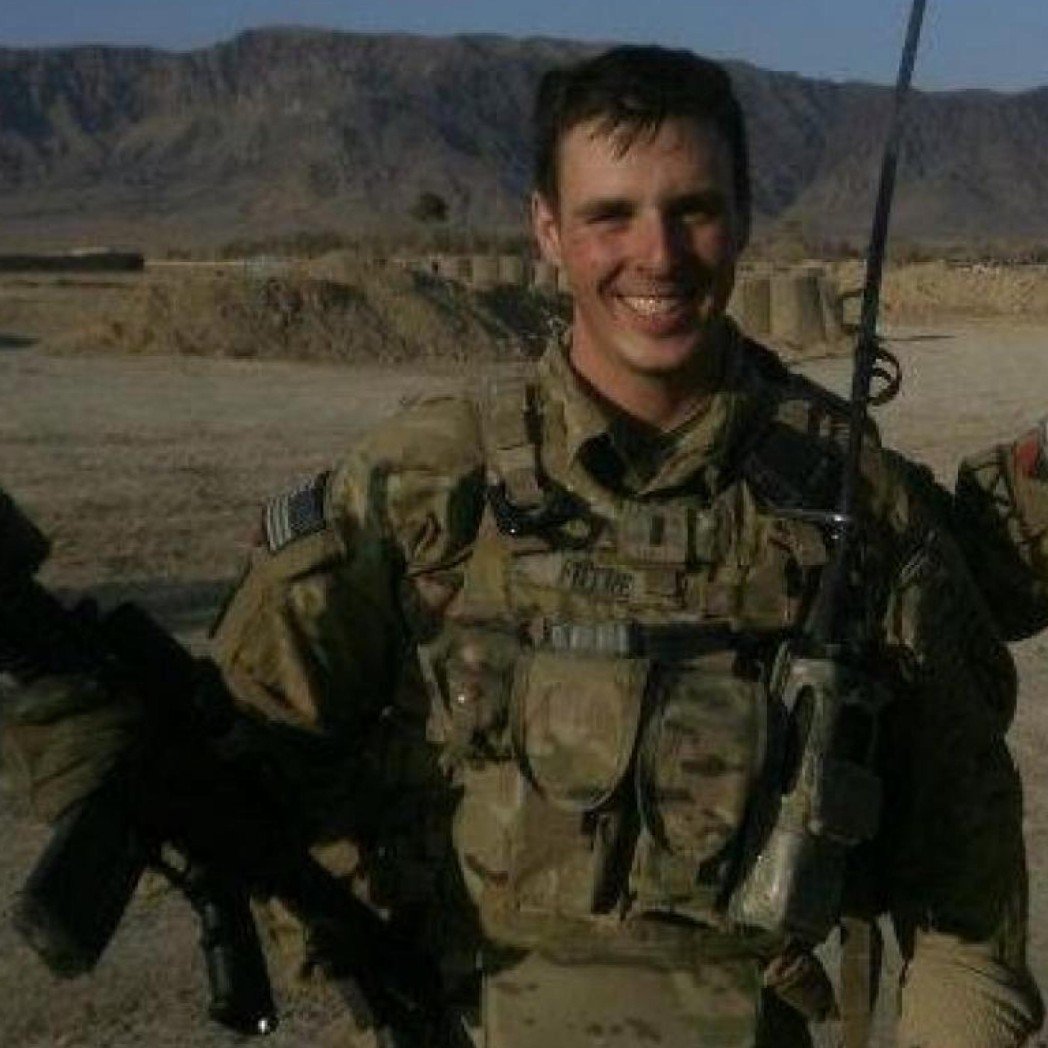
Neil Fotre is a contributing writer for Coffee or Die, and former U.S. Army Armor Officer. He has served operational deployments in South Korea and Afghanistan. Neil earned a master’s degree in journalism from the Medill School of Journalism at Northwestern University. He covers military and veteran community topics. His writing has been featured in the Military Times, Forbes, the Daily Beast, Task and Purpose and Business Insider. In between pounding his fingers on a keyboard, he is constantly glugging away on seltzer water and sipping on dark roast… pinky out.
BRCC and Bad Moon Print Press team up for an exclusive, limited-edition T-shirt design!
BRCC partners with Team Room Design for an exclusive T-shirt release!
Thirty Seconds Out has partnered with BRCC for an exclusive shirt design invoking the God of Winter.
Lucas O'Hara of Grizzly Forge has teamed up with BRCC for a badass, exclusive Shirt Club T-shirt design featuring his most popular knife and tiomahawk.
Coffee or Die sits down with one of the graphic designers behind Black Rifle Coffee's signature look and vibe.
Biden will award the Medal of Honor to a Vietnam War Army helicopter pilot who risked his life to save a reconnaissance team from almost certain death.
Ever wonder how much Jack Mandaville would f*ck sh*t up if he went back in time? The American Revolution didn't even see him coming.
A nearly 200-year-old West Point time capsule that at first appeared to yield little more than dust contains hidden treasure, the US Military Academy said.


